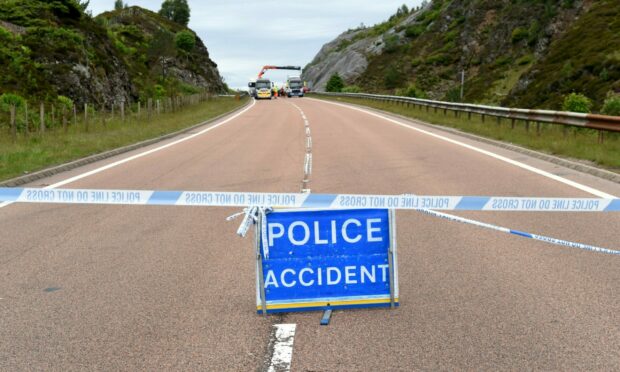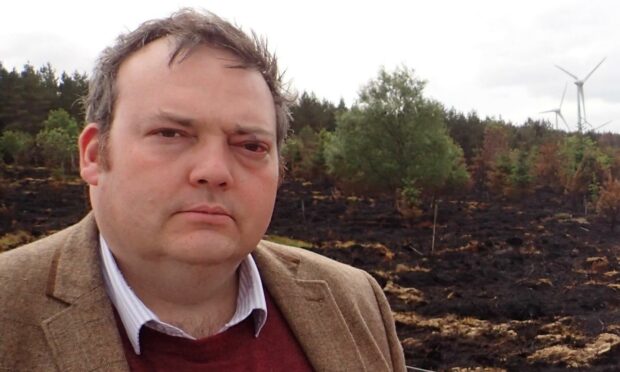Shocking figures show the Highland region had the nation’s deadliest roads for six years in a row – claiming more than 100 lives since 2016.
The distressing death toll works out at an average of one fatality every 20 days.
More than half of 108 tragedies recorded in the Highland Council area between 2016 and 2021 were on trunk roads such as the A9, A82 and A96.
North MSP Jamie Halcro Johnston said the region now had a “notorious reputation”.
He urged SNP and Green government ministers to heed “desperate pleas” from motorists for urgent investment to upgrade the key routes.
Highland has the largest road network in the country, and the highest levels of trunk road traffic.
However, it has less total traffic on all roads than Glasgow, Edinburgh, North Lanarkshire, Fife and Aberdeenshire.
Glasgow and Edinburgh have the most serious casualties in Scotland on their roads, but Highland has recorded highest number of deaths in every year between 2016 and 2021.
What do the statistics show?
According to newly-released Transport Scotland statistics, a total of 108 people died in Highland in the last six years, and 199 in the last decade.
The figures include 14 deaths last year, which was 10% of all road deaths in Scotland.
Nine of them were on trunk roads, with Highland being the scene of 21% of Scottish trunk road deaths in 2021.
It is feared the number of fatalities in 2022 could be even worse, with eight people having lost their lives on just one section of the A9 in recent months.
After the 14 tragedies in Highland last year, the next highest was the 12 fatalities on all roads in Aberdeenshire, followed by nine in Argyll and Bute, Glasgow and Dumfries and Galloway.
Aberdeenshire had the greatest death toll in 2013, 2014 and 2015, but has since been overtaken by Highland.
Mr Halcro Johnston, Scottish Conservative MSP for the Highlands and Islands, said the figures were absolutely appalling.
“Over 100 families are grieving the loss of loved ones due to deaths on our region’s roads,” he said.
‘Desperate pleas’
“Improvements are urgently needed. SNP-Green ministers cannot continue to ignore the desperate pleas from road users in the Highlands that trunk routes, in particular, desperately need upgraded.
“The area now has a notorious reputation as one where lives are at risk on our roads.
“SNP ministers should stop bowing to the demands of their Green coalition partners, who are delaying investment in our roads, and commit to ensuring they are as safe as possible.
“If they don’t, these deaths will sadly only continue to increase.”
The SNP previously committed to dualling the A9 from Inverness to Perth, and the A96 from the Highland capital to Aberdeen, but both schemes have stalled.
The general trend in Scotland has been a reduction in road casualties, but the fall has been lower in Highland than in most other parts of Scotland.
Aberdeen and Moray made the greatest improvements, cutting serious injuries by 43% and 36% respectively, when the average for 2014-18 is compared to 2017-2021.
A Transport Scotland spokesman said overall road casualties remained at some of their lowest levels since annual records began in 1950.
He added: “One death on Scotland’s roads is one too many.
“The fact that road casualties are some of their lowest levels, even with increasing car use over time, means very little to those who have sadly lost friends and loved ones in tragic circumstances.
“We are aware this year has seen tragic accidents across the road network and we remain committed to acting with our partners to address the issues these present to our communities, our society and the individuals involved.”
Superintendent Stewart Mackie, deputy head of road policing, said: “We work tirelessly to improve road safety for all users across Scotland and recognise that any death is a tragedy.
“Police Scotland is committed to supporting the Scottish Government’s Road Safety Framework to reduce road deaths and injuries through education and enforcement action, alongside our road safety partners.
“We all have a responsibility to be safe on the roads, and I urge all drivers and road users to help us make Scotland’s roads safe for everyone.”

